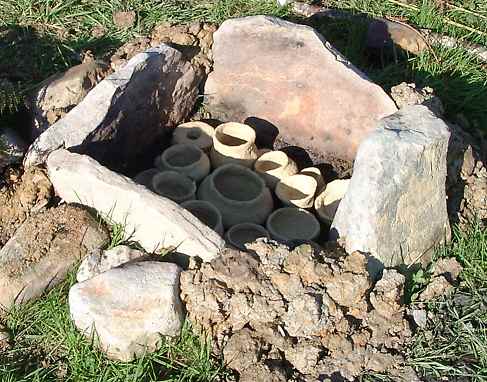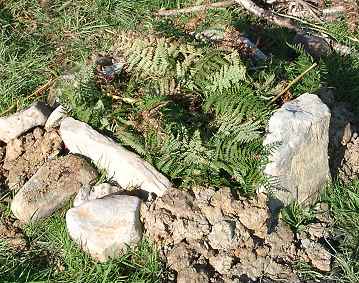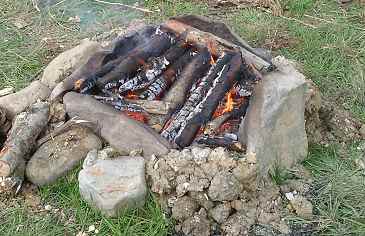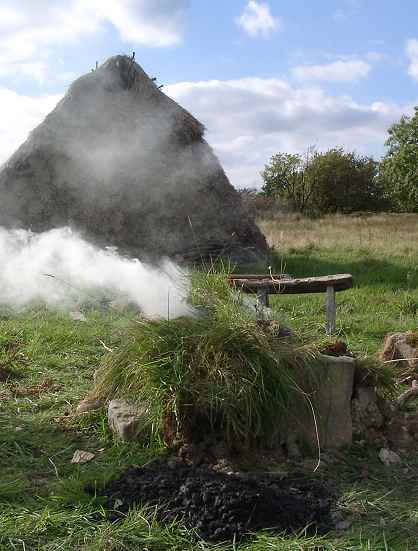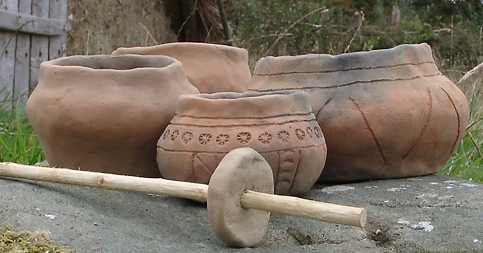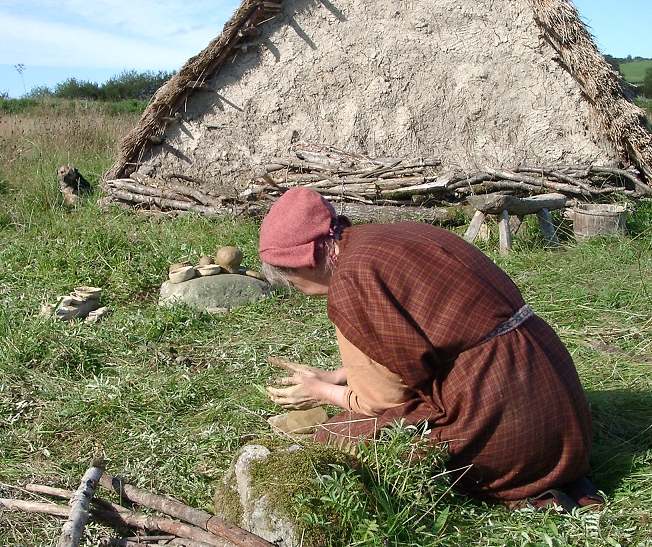
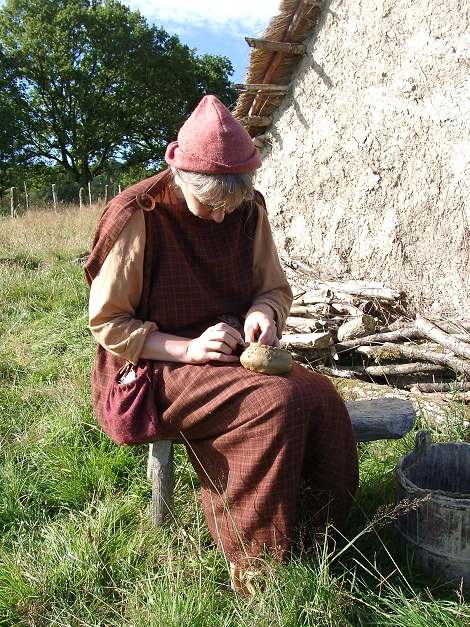
The clay was just the subsoil spoil from digging holes
for the fence posts. This was steeped in water, or puddled, for a few
weeks and the larger stones removed. Most of the pots we made just with
clay, but we also tried adding some sand as a temper. Some of the pots
can be seen drying in the sun.
The pots were left overnight to dry a little before
being decorated with incised lines and stamps.
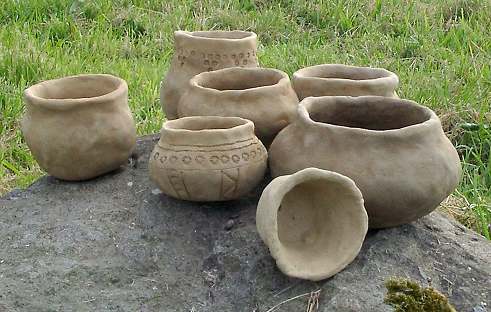
Above - A selection of unfired pots.
